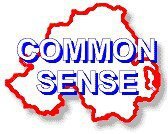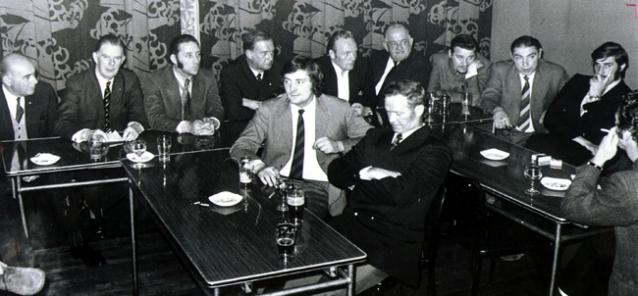A Short History of the Ulster Defence Association
Whilst it is possible to trace back the name to the Ulster Defence Union set up in 1893 in order to resist the Second Home Rule Bill, the origin of the Ulster Defence Association, as it is known today, is also very much rooted in the period of the early 1970s. In this period, attacks against the Unionist/Loyalist community, far removed from the concept of an ‘occupying force’, resulted in the growing demand that something needed to be done to protect the community from Irish-Nationalist sectarian murder gangs and defend the Union. In direct response to the threat posed to embattled loyalist communities various loyalist vigilante groups were set up in Belfast and other areas of Northern Ireland, with many from the Young Tartan gangs at that time becoming a front-line of defence. These vigilante groups took it upon themselves to mobilise and do what the security forces were not or could not do, provide adequate protection to their communities.
The groups were not under one umbrella organisation but had their own area and their own autonomy and no overarching command structure. In the community in which the given vigilante group operated every able bodied man was expected to play a full part, either patrolling the area in order to stop attacks by Irish-Republican murder gangs or to contribute in some manner to the functioning of the vigilante group. It would not be until 1971 that the Ulster Defence Association would emerge, unifying many of these vigilante groups under the one command and control structure to facilitate an organised defence. As a result, the Ulster Defence Association was born, its organisational structure in keeping with the structure of the regular army, with the creation of Companies and Brigades and appointed Provost Marshalls to retain discipline within the ranks.
At this stage it is estimated that the membership of the U.D.A. was around 30,000 taking into account total membership across Northern Ireland, with both men and women units developed across the Province within what was a community citizens army. The UDA would adopt the motto Quis Separabit, translated from the Latin as ‘None shall separate us’ and a clear reference to the text of Romans Ch8 v35 – who shall separate us from the love of god? This motto was first used by the Knights of Saint Patrick, and was also taken as the motto of the Royal Irish Rifles & the Irish Guards, it also had deeper historical origins in that it was the motto of the Ulster Defence Union in 1896.
One of the first major tests of the resolve of the U.D.A. came on the 30th June 1972 when the UDA decided to erect barricades and create 'no go' areas in many loyalist areas throughout Northern Ireland. This was in part a response to the actions of the IRA who had erected similar ‘no go’ areas in Londonderry and elsewhere but was also a defensive measure in order to protect the loyalist community from further IRA attacks.
Many Loyalists also wanted to place pressure on the British security forces to do their duty and protect the Protestant-Unionist-Loyalist community by taking down barricades in Irish-Republican strongholds as such ‘no go’ areas allowed Irish-Republican murder gangs to act with impunity as the security forces could not operate effectively within such areas. The stand off between the British Army and the Ulster Defence Association came about at Ainsworth Avenue in Belfast and was sparked by a dispute over where the barricades being erected by the members of the Ulster Defence Association should be placed. The British army wanted the barricade 100 yards further up Ainsworth Avenue. The Ulster Defence Association did not accept this proposal as it would have left many Protestant homes in the area open to attack from sectarian murder gangs from the Irish-Nationalist community in the nearby Springfield Road.
The Ulster Defence Association was not prepared to compromise with the safety of vulnerable members of their community and the call went out for members of the Ulster Defence Association to assemble in order to confront the British Army. It is estimated that several thousand members of the Ulster Defence Association heeded the call and assembled in the Ainsworth Avenue area, the issue had become a point of principle, the principle being the safety and security of Protestant families.
The British army Commander of Land Forces General Ford spoke to senior representatives of the Ulster Defence Association. The result was that a tense situation was defused with the Army promising to ensure the safety of vulnerable Protestant families against attack from Irish-Republican sectarian murder gangs. This incident had seen the UDA cement their place as the defenders of the Protestant community.
The UDA arranged massive displays of strength on the streets of Belfast during the summer of 1972, when thousands of 'uniformed' members marched through the city centre to show that the nucleus of a Loyalist army was at the ready to defend Ulster. In 1973, frustrated at the inability of security forces to take on and defeat the IRA, the Ulster Freedom Fighters (UFF) would emerge as the military wing for Ulster’s defence.
The operational stance of the U.F.F. is reflected in its motto Feriens Tego, translated from the Latin as “In Striking I defend”, which itself signified a shift from defence to offense, with the rationale that the best form of defence is to attack. In order to better to engage the enemy it was necessary to specialise and so the U.F.F. was to be dedicated solely to military operations against Irish Republican terrorists and their active and passive supporters. The rise in UFF military activity, in direct response to Republican terrorism, would sustain a campaign throughout the 70’s, 80’s & 90’s, that would ultimately bring the IRA to the realisation that the Unionist/Loyalist community would not be bombed, shot or intimidated into a United Ireland. The dedication, commitment and sacrifice of the UFF and its associated units would ensure that the Unionist/Loyalist community would be protected and that armed-republicanism would not succeed in an armed insurrection designed to overthrow the constitutional position of Northern Ireland within the United Kingdom and destroy our birthright as British Citizens.
A youth-wing, known as the Ulster Young Militants (UYM) would also be forged, to prepare the next generation for active duties in the UFF. The motto of this youth movement was Terrae Filius, ‘Son of the Land’, with many members of the UYM progressing into active service with the UFF upon reaching the specified age, experience and suitability.
In 1973 the Ulster Community Action Group was set up, to provide for the material well being of Ulster Citizens, using a community development approach to address working class issues. At the same time the Loyalist Prisoner Aid (LPA) was also established to meet the welfare and rights needs of prisoners across Ulster’ s Jails. The Ulster Army Council would also be created as an umbrella group of Loyalist paramilitaries with the main aim to set up a Loyalist army of 20,000 men to take control of Northern Ireland if needed.
The next great test of the Ulster Defence Association, and for many the zenith of its political influence, was to come in 1974 with the Ulster Workers Council Strike, when Ulster citizens, and a provisional Government of Ulster brought down the power-sharing arrangements of Sunningdale. In 1974 the UDA opened the Ulster Civil Liberties Centre on the Shankill Rd, which published its version of a Bill of Rights for the United Kingdom. At the Frommer Conference (Holland) in 1975, the UDA leadership began to make the case for local Governance for Ulster. This conference best exemplified the principles underpinning why the UDA was formed. It was stated “the objective of the UDA from the beginning was to maintain the status quo in the face of the threat to destroy ulster by the IRA”
The UPRG began as the New Ulster Political Research Group which was set up in 1978. The March 1979 report, Beyond the Religious Divide, argued the case for Northern Ireland independence and even provided an outline of the workings of such a state, basing it largely on the American model of a Supreme Court, written constitution and bill of rights. In the mid 80’s, the Ulster Defence Force (U.D.F) was formed, as an officer training cadre, in direct response to the Anglo-Irish Agreement, and the doomsday scenario of all out civil-war. Those who successfully underwent training would receive their much valued silver and gold wings to mark their passing-out as an officer candidate with many of these officer cadre would go on to a full military service.
In 1987 the UPRG would present ‘Common Sense’ for discussion, as an alternative to the failed Anglo-Irish Accord. This proposed a devolved legislative government for Northern Ireland and a written constitution to build a progressive democracy. A modern democratic political structure based on consensus and proportional representation, with a bill of rights and a supreme court charged with the responsibility to uphold constitutional law and safeguard the rights of the individual. Many, with the value of hindsight, would since see this as the precursor to the Belfast Agreement and as the blueprint for the consensual power-sharing arrangement we now inhabit.










